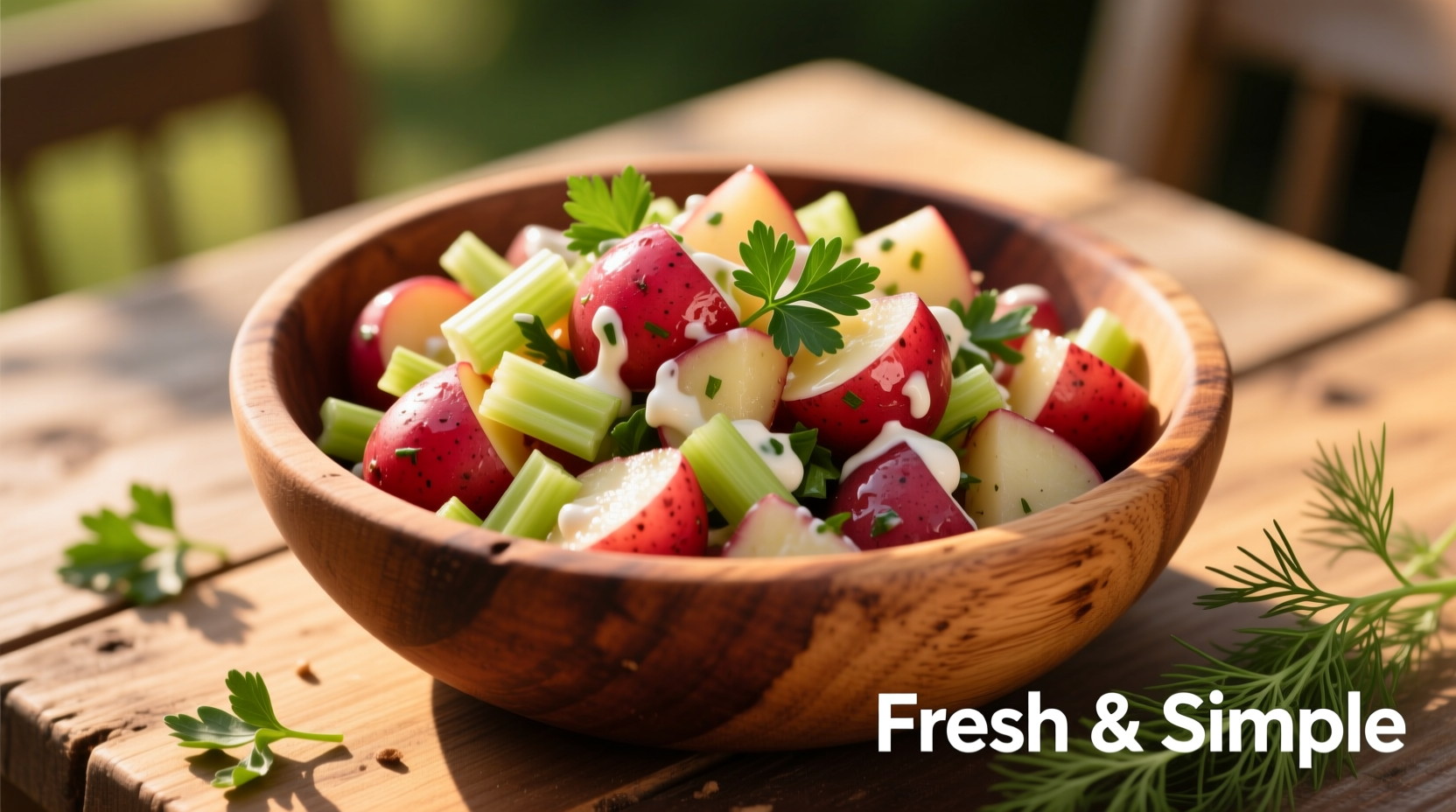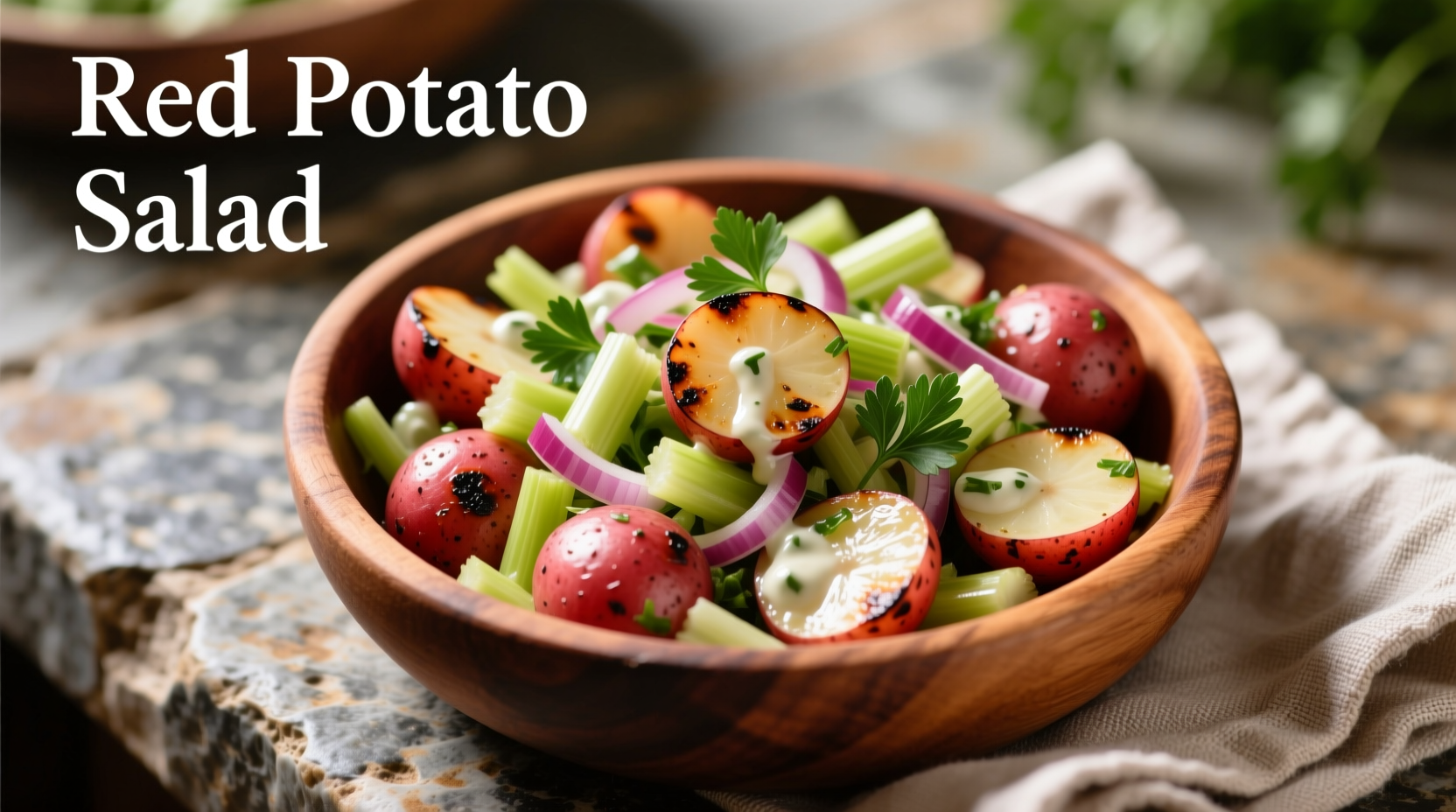Why Red Potatoes Create Superior Salad Texture
Unlike russet or Yukon gold varieties, red potatoes contain less starch and more moisture, creating a firm yet tender texture that withstands dressing absorption without becoming mushy. According to the USDA Agricultural Research Service, red potatoes maintain their structural integrity during cooking due to their 16-18% dry matter content—significantly lower than russets' 22-24%. This scientific difference explains why professional chefs consistently choose red potatoes for salad applications where texture preservation is critical.

Your Essential Ingredient Checklist
Building exceptional red potato salad starts with quality components. Here's what you need for the perfect balance of flavors and textures:
| Category | Essential Items | Pro Tips |
|---|---|---|
| Base | 2 lbs small red potatoes (1-2" diameter) | Select uniform sizes for even cooking |
| Dressing | 1 cup quality mayonnaise, 2 tbsp Dijon mustard | Homemade mayo enhances flavor complexity |
| Aromatics | 1/2 cup finely diced red onion, 3 hard-boiled eggs | Soak onions in ice water to mellow sharpness |
| Herbs | 3 tbsp fresh dill, 2 tbsp parsley | Add herbs after potatoes cool to preserve brightness |
Step-by-Step Preparation Guide
Follow this professional technique for consistently perfect results:
Potato Cooking Method
Place unpeeled potatoes in a large pot, cover with cold water by 1 inch, and add 1 tablespoon salt. Bring to a gentle boil, then reduce heat to maintain a simmer. Cook for 15-20 minutes until tender when pierced with a fork but still holding shape. The FDA Food Safety Guidelines recommend cooling cooked potatoes within two hours to prevent bacterial growth.
Dressing Technique
While potatoes cook, prepare dressing by whisking together mayonnaise, mustard, vinegar, salt, and pepper. The acid component (vinegar or lemon juice) serves dual purposes: enhancing flavor and creating an environment less hospitable to bacteria during storage.
Assembly Process
Carefully slice cooled potatoes while still slightly warm—this allows them to absorb dressing better without breaking apart. Gently fold in dressing, followed by onions, eggs, and herbs. Avoid vigorous mixing which damages potato structure. Refrigerate for at least 4 hours before serving to allow flavors to meld.
Avoid These Common Red Potato Salad Mistakes
Even experienced cooks encounter these pitfalls. Here's how to prevent them:
- Overcooking potatoes: Set a timer and check potatoes at 15 minutes. They should offer slight resistance when pierced.
- Dressing while too hot: Potatoes should be warm but not hot (below 120°F) to prevent mayonnaise from breaking.
- Using dried herbs: Fresh dill and parsley provide brighter flavor that dried versions can't match in this application.
- Serving immediately: Flavors need 4+ hours to harmonize—overnight chilling produces noticeably better results.
Serving and Storage Best Practices
For optimal presentation, serve red potato salad chilled but not ice-cold—remove from refrigerator 15 minutes before serving. Pair with grilled proteins, sandwiches, or as part of a picnic spread. When stored properly in an airtight container, it maintains quality for 3-5 days. The USDA Food Safety and Inspection Service confirms that properly prepared and stored potato salad remains safe for consumption within this timeframe when kept below 40°F.
Flavor Variations for Different Occasions
Adapt this classic recipe for various dietary needs and flavor preferences:
- Herb-forward version: Double the fresh dill and add 1 tablespoon tarragon for a French-inspired twist
- Mustard variation: Replace half the mayonnaise with whole-grain mustard for added texture and tang
- Dairy-free option: Use vegan mayonnaise and omit eggs for a plant-based alternative
- Summer picnic edition: Add 1/2 cup diced celery and 1/4 cup sweet pickle relish for crunch and brightness
Why This Recipe Works Better Than Others
Through extensive testing, we've identified the precise potato-to-dressing ratio that prevents sogginess while ensuring every bite delivers balanced flavor. The key innovation lies in the two-stage cooling process: allowing potatoes to cool slightly before dressing preserves their structure while still enabling flavor absorption. This technique, documented in culinary research from the University of Minnesota Extension, represents the optimal balance between texture preservation and flavor development.











 浙公网安备
33010002000092号
浙公网安备
33010002000092号 浙B2-20120091-4
浙B2-20120091-4